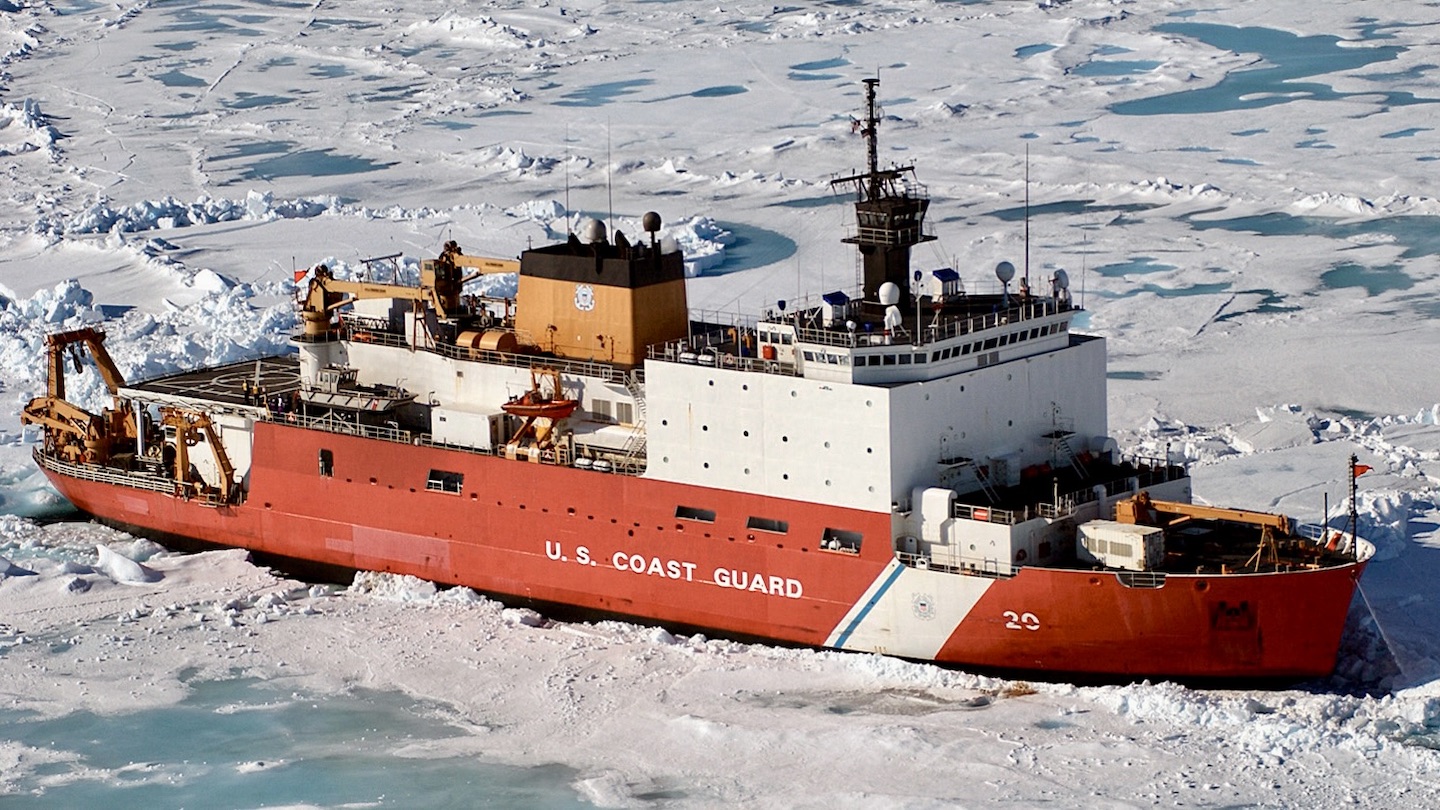A fire that recently broke out onboard the medium icebreaker USCGC Healy has forced the vessel to abandon its annual summer Arctic patrol. The incident highlights the inadequacy of the Coast Guard’s current icebreaker fleet, which Healy represents half of and the other ship is in dry dock getting a much-needed overhaul in an attempt to extend its service life even further.
Healy originally departed from Seattle for its summer Arctic patrol on June 12, traveling through the Bering Strait off Alaska into the Chukchi Sea further north. It was around July 25, while traveling in Canadian waters near Banks Island, the westernmost island in the Canadian Arctic Archipelago, when a fire broke out in the engineering compartment. Healy turned around from her position on July 26, and was due back in Seattle yesterday.

Details on the fire, which was quickly extinguished and did not result in any casualties, were broadly confirmed by Vice Commandant of the Coast Guard Admiral Kevin E. Lunday during a talk at the Brookings Institution in Washington, D.C., on August 7.
“Coast Guard Cutter Healy… had just begun her summer patrol and was up north of Alaska and the Chukchi Sea. It had an electrical fire in the engineering spaces; she’s [Healy’s] now having to return to home port to try and affect repairs,” Lunday said.
Healy, which is largely used for research purposes, was due to partake in three separate research missions during her Arctic deployment. Whether she will complete those missions remains in question.
“Most of the machinery systems aboard are antiquated and for some there aren’t even parts. We’re going to work as hard as we can to repair it and try to preserve the rest of the patrol but that’s in doubt,” Lunday noted.
At present, the icebreaker, which was commissioned in late 1999, is one of only two in the Coast Guard’s fleet — the other being the heavy icebreaker USCGC Polar Star. Polar Star, commissioned back in the 1970s, is currently undergoing service life extension work at the Mare Island Dry Dock in California, which is expected to be completed this month. Polar Star’s sister ship, USCGC Polar Sea, is not seaworthy due to her cannibalization of parts to keep Polar Star going.

The incident is not the first fire to impact Healy‘s summer missions. Back in 2020, a fire broke out while the vessel was 60 nautical miles off of Seward, Alaska, en route to the Arctic. The fire was extinguished within a half hour.
Problems have faced the much older USCGC Polar Star, too. Back in early January 2018, issues with Polar Star’s 1970s-era electrical system caused an engine failure and flooding on board during a cruise, which it set off from Seattle for in November 2017. At the time, the vessel’s main mission was to cut a path through the Antarctic ice for access to the U.S. Antarctic Program’s McMurdo Station.
These various incidents have sparked major concern over the limitations of the Coast Guard’s icebreaker fleet. While Healy can only cut through around eight feet of ice compared to Polar Star’s ability to break up miles of ice up to 21 feet thick, her availability is vital, particularly in the context of Polar Star’s ongoing upgrades.
Healy’s recent engine fire is “a concern,” Lunday revealed earlier this month, because if she “can’t continue that patrol the U.S. will have no surface presence in the Arctic this summer.”

Given the strategic importance of the Arctic region, which has grown exceptionally recently, the lack of U.S. icebreaking capabilities there is significant. Being able to pave pathways through the melting ice is crucial for opening up new shipping routes as well ones used for military applications. The push for new routes up north has only been bolstered by the recent conflict in the Red Sea,
Russia, for example, is massively expanding its aviation facilities in the region at Nagurskoye Air Base, adjacent to its large Arctic Trefoil outpost. The country has more icebreakers than any other nation on Earth with dozens on hand, including a new 9,000-ton Project 23550 combat icebreaker which can reportedly break through ice up to five and a half feet thick. Russia is also the only operator of nuclear-powered icebreakers.

Major concerns regarding the Coast Guard’s overall icebreaking capacity has only increased even as resources have been funneled to addressing the issue.
The contract for the first new heavy icebreaker as part of the Polar Security Cutter program (PSC), designed to recapitalize the U.S. icebreaker fleet, was issued in 2019 to the Halter Marine shipyard, now Bollinger Shipyards. However, since then, the delivery of the vessel has been delayed several times. The U.S. Government Accountability Office is anticipating delivery in 2028, compared with earlier predictions of this year, and the overall timeline of the PSC program remains uncertain.
The service’s Fiscal Year 2025 budget zeroed out a previous request for $47.2 million for the PSC program, with a Coast Guard spokesperson indicating to National Defense that the service is working to “re-baseline” the program — despite it remaining a “top acquisition priority” — with the goal of devising a new program schedule at some point later this year.

In the meantime, in an effort to bolster its icebreaking capabilities, the Coast Guard has looked into acquiring the commercially available icebreaker Aiviq, a 360-foot Arctic ice class anchor handler. Discussions about the service potentially acquiring the vessel to assist Healy and Polar Star have been ongoing since 2015.
More recently still, the U.S., along with its allies Canada and Finland, has agreed to a resource-pooling plan to help meet projected demand for as many as 90 icebreakers among allied nations over the next decade via the Icebreaker Collaboration Effort, or ICE Pact.
While such future planning is welcome, the Coast Guard badly needs greater icebreaking capabilities now – which the fire on board the aging Healy underscores.
Contact the author: oliver@thewarzone.com
